Yeah I was aware of iResolution, I just never used the z component, but I guess I should still add it for compatibility.
Mouse zw has no equivalent in Compute toys, so that needs to be added in the first place.
Texture mipmaps for the pass-in/out buffers are not computed unfortunately
20.05.2025 13:51 — 👍 1 🔁 0 💬 0 📌 0
Of course there are still some minor differences:
* matrix multiplications are not a*b but mul(a,b)
* no GLSL texture types like sample2D / etc
* there are no "Shadertoy" channels, you need to resetup them to use absolute indices of the pass_in/out buffer
11.05.2025 14:37 — 👍 3 🔁 0 💬 1 📌 0
Slang can be made extremely close to GLSL/Shadertoy style of shaders by using a set of defines and typealiases, I've made a template in compute.toyts just for that compute.toys/view/1947
I also ported my most popular shadertoy using it:
compute.toys/view/1948
11.05.2025 14:37 — 👍 21 🔁 2 💬 1 📌 0
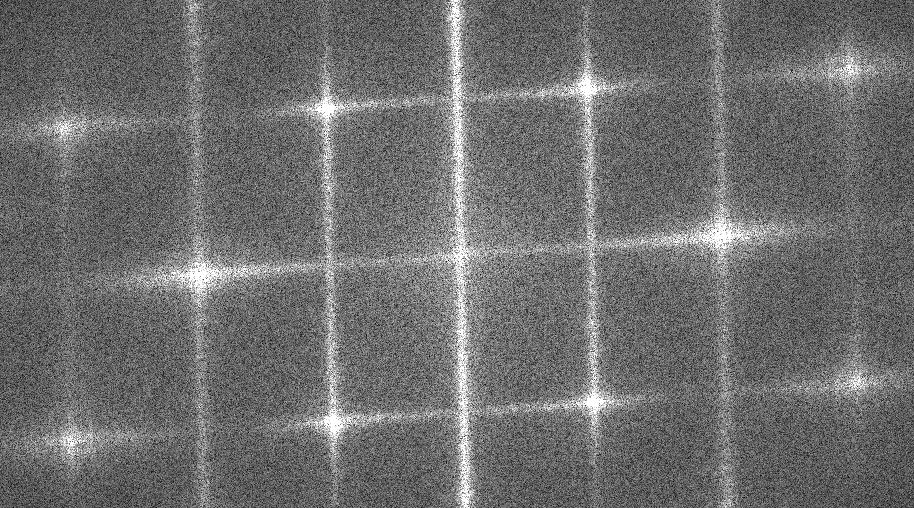
Compute.toys finally got the Slang compiler integrated, which means its finally time to ditch WGSL 🎉🎉
I've ported my FFT to it, coding in it is much nicer. compute.toys/view/1922
Should try something with its autodiff next.
05.05.2025 14:24 — 👍 19 🔁 2 💬 1 📌 0

Faster Mixed Radix FFT
Forked from https://compute.toys/view/1914
Faster version
Made a mixed radix FFT implementation in compute.toys/view/1915
It is neat, but I still wonder how do you properly handle large prime factor size FFT's?
03.05.2025 14:37 — 👍 15 🔁 3 💬 0 📌 0
I mean its just SPH, its not *that* difficult
24.04.2025 10:55 — 👍 1 🔁 0 💬 0 📌 0
No, its written by me, that's why I can not answer your question easily.
24.04.2025 10:50 — 👍 1 🔁 0 💬 1 📌 0
uhhhm, shadertoy?
24.04.2025 10:42 — 👍 1 🔁 0 💬 1 📌 0
The answer to this will require a whole new blog post I'm afraid...
24.04.2025 10:38 — 👍 0 🔁 0 💬 1 📌 0
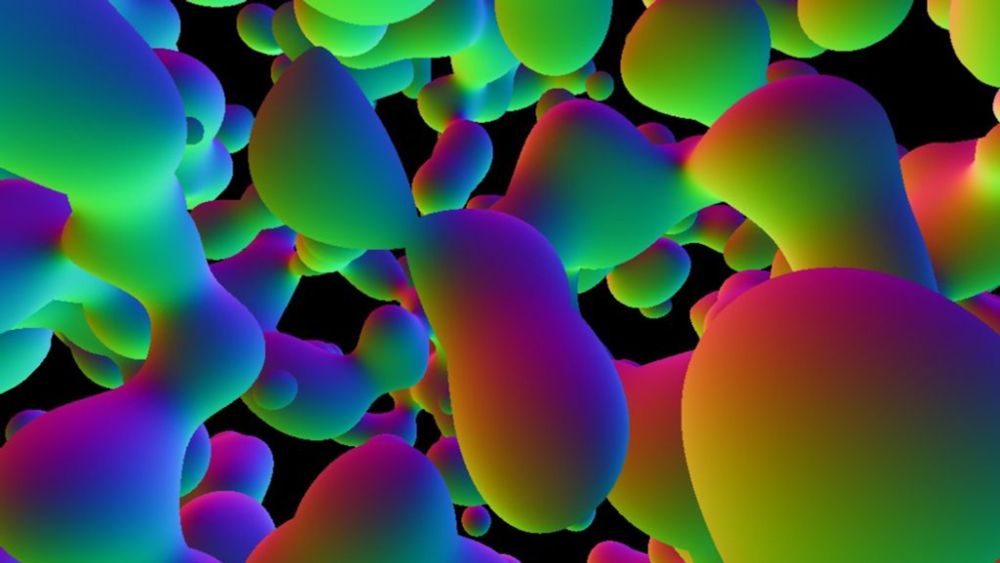
Shadertoy
I've also tested out using it for nontrilinear stuff as well as volumetric integration
shadertoy.com/view/w3sXzf
shadertoy.com/view/t3sXzX
shadertoy.com/view/t3lSzf
23.04.2025 15:44 — 👍 3 🔁 0 💬 0 📌 0
I've ported my vrchat isosurface ray tracer to shadertoy and added it to my fluid simulation there.
Its probably the fastest multibounce ray tracing for liquids I've made thus far.
shadertoy.com/view/w3sXzs
23.04.2025 15:44 — 👍 17 🔁 2 💬 2 📌 0
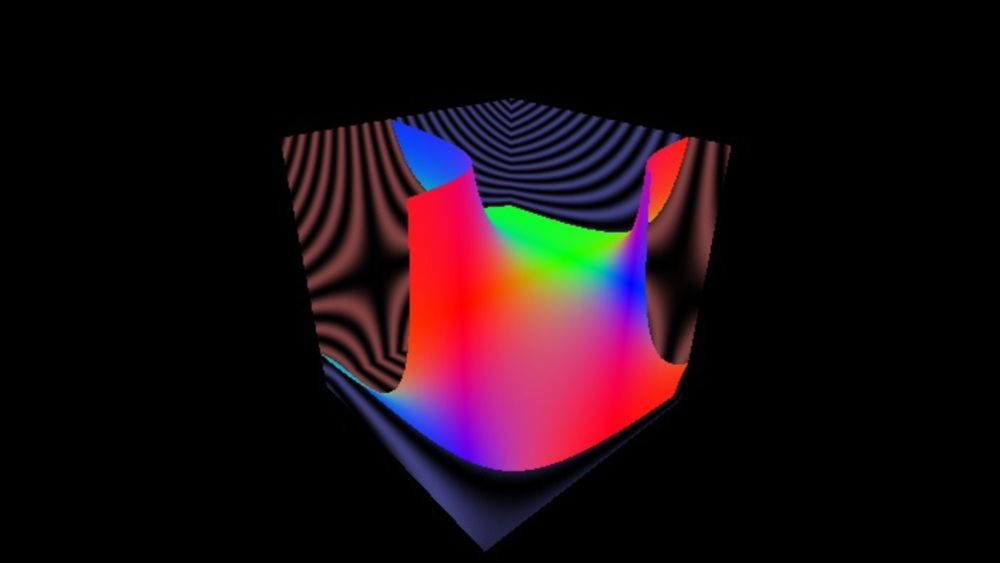
Shadertoy
I posted my own implementation of the trilinear isosurface intersection on shadertoy
2 methods, one is the one from jcgt.org/published/00... and the other one is my own idea of using 4 trilinear samples (can use HW samplers here) to reconstruct the cubic.
www.shadertoy.com/view/WXS3Rm
06.04.2025 17:55 — 👍 8 🔁 0 💬 0 📌 0
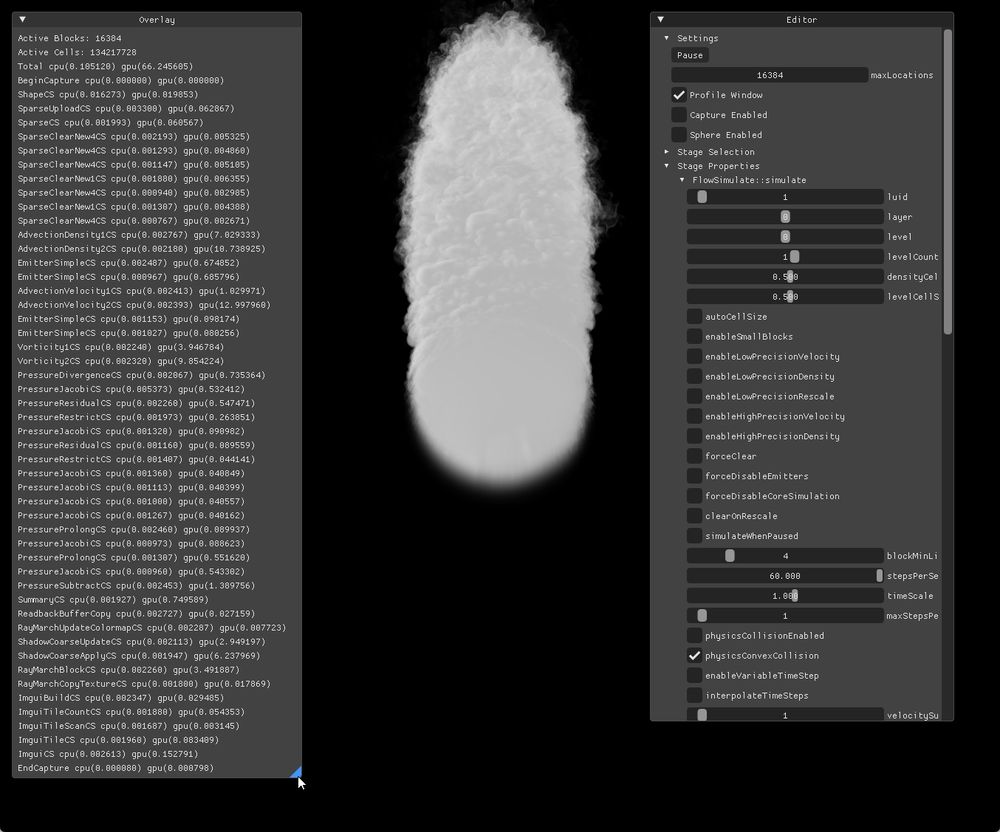
Managed to get Nvidia Flow (PhysX) to compile and run, after initially failing the other week. Was curious for a quick peek now that it's been open sourced (github.com/NVIDIA-Omniv...)
Flow itself isn't CUDA based, but instead uses compute shaders
Some higher level observations in the replies 1/?
06.04.2025 12:40 — 👍 34 🔁 7 💬 1 📌 0
I've also finally implemented sorting of the simulation particles, gave quite a nice performance boost (around
3-4x)
04.04.2025 19:32 — 👍 1 🔁 0 💬 0 📌 0
till surprising to me just how fast this turned out to work, my older attempts at ray tracing density isosurfaces were horrifyingly slow, and on top of that less accurate too, as it was just constant step ray marching.
04.04.2025 19:32 — 👍 1 🔁 0 💬 1 📌 0
The paper was about tracing SDFs but you can apply it to any isosurface of an interpolated 3D volume, like the liquid density.
04.04.2025 19:32 — 👍 1 🔁 0 💬 1 📌 0
The Nvidia paper from above also shows how to optimize those intersections quite significantly, giving a fast way to get the coefficients of the cubic as well as how to solve it quickly (would be great if it wasn't patented by Nvidia tho heh...)
04.04.2025 19:32 — 👍 1 🔁 0 💬 1 📌 0

Shadertoy
The ray tracing algo is essentially a 2 level sparse DDA ray marcher which finds voxels with the liquid isosurface passing through them. When its found, a trilinear surface patch ray intersection is performed (solution to a cubic equation shadertoy.com/view/tlycDK)
04.04.2025 19:32 — 👍 1 🔁 0 💬 1 📌 0
I've been improving my VRChat liquid simulation for the last few weeks. Of the most notable things that I've implemented is a ray tracing algorithm over a 3d texture isosurface (using some ideas from jcgt.org/published/00...)
Its surprisingly performant for VR resolutions!
04.04.2025 19:32 — 👍 18 🔁 2 💬 3 📌 0
still better tho (or maybe its cause im twitter blue or whatever)
21.03.2025 00:17 — 👍 1 🔁 0 💬 2 📌 0
Is it me or is bluesky video quality absolute trash
20.03.2025 21:16 — 👍 3 🔁 0 💬 3 📌 0
But other than that its very similar to my old VRChat fluid sim, except now I can have proper separate particles with their own data that isn't lost (like color in the video)
(also I no longer use Custom Render Targets (they are cursed))
20.03.2025 19:51 — 👍 2 🔁 0 💬 1 📌 0
The grid now stores the minmax id's of the particles in this cell, its done by rasterizing points with vec2(id, N-1-id) with min blending (to get min and max). If a particle didn't get into this grid, its afterwards additively rasterized into another average particle grid.
20.03.2025 19:51 — 👍 0 🔁 0 💬 1 📌 0
I'm slowly porting my approximate grid SPH simulation to VRChat. It did require few improvements to be stable enough, now its a hybrid neighbor index/particle average grid.
Still need to implement
@d4rkpl4y3r.bsky.social 's mip counting sorting method for improved performance.
20.03.2025 19:51 — 👍 54 🔁 6 💬 2 📌 0
I usually render particle fluids with particles, as it gives the most details, but here I tried using ray marching for the fluid. It certainly is much more liquid like, but at the same time its slower and loses some detail. I wonder if I can improve this. compute.toys/view/1809
09.03.2025 18:02 — 👍 19 🔁 2 💬 0 📌 0
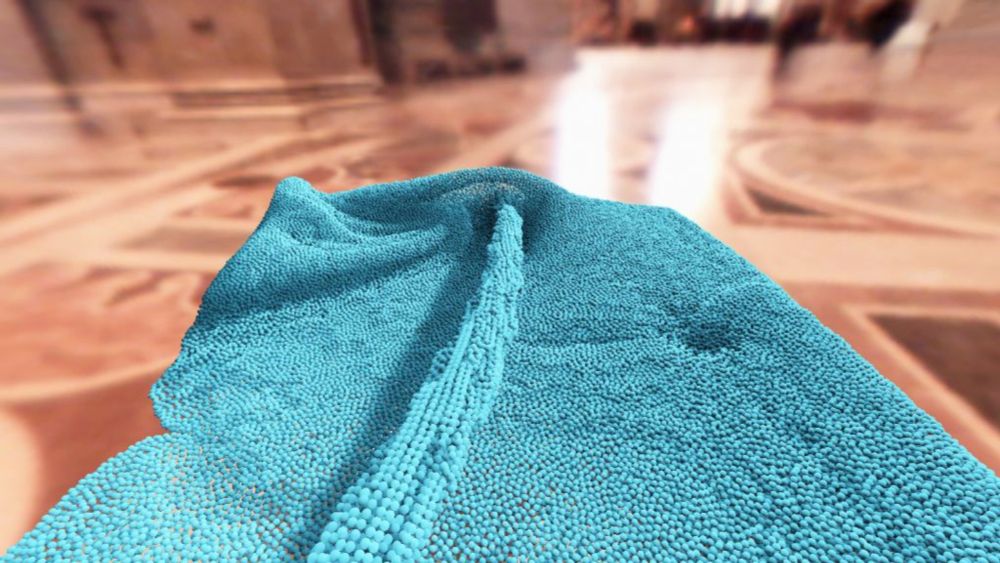
Shadertoy
I initially tried to do so in Shadertoy, but my approach there was losing the initial position data, which essentially just broke it, so I could only do "high viscosity" instead shadertoy.com/view/M33Bz2
09.03.2025 00:01 — 👍 2 🔁 0 💬 0 📌 0
I tried to apply my previous simulation approach to model soft bodies. By keeping the initial positions and using those to create springs between particles with spring length being the distance between initial positions its easy to make a soft body sim.
compute.toys/view/1807
09.03.2025 00:01 — 👍 12 🔁 0 💬 1 📌 0
Not sure if I have seen this applied for Lagrangian fluid simulations before, you may correct me if someone already did something like that (probably yes).
06.03.2025 02:38 — 👍 2 🔁 0 💬 0 📌 0
Without a viscosity term the approximate SPH simulation does start to "boil" with time, which is expected. But thankfully even a low viscosity fixes this.
06.03.2025 02:38 — 👍 2 🔁 0 💬 1 📌 0
https://thenumb.at
Computer Graphics, Programming, Math, OxCaml, C++
I make stuff sometimes?!
when i’m not doing life things, i shepard a research engineering team at apple
Space nerd making StellarDrive: a game about building starships to explore the cosmos. You can play an early alpha for free on itch: http://curious-owl-dev.itch.io/stellardrive
Developer of Interactor on Unity Asset Store.
I process the realities of life in the virtuality of games.
#gamedev #unity3d #madewithunity
NSFW art blog, what can I say, I love femboys. All characters are 18+ Thank you for looking! 🙇 Support me at: https://www.patreon.com/frogzone_art 🚫no AI
Twitter: @frogzone_art
From SLAM to Spatial AI; Professor of Robot Vision, Imperial College London; Director of the Dyson Robotics Lab; Co-Founder of Slamcore. FREng, FRS.
🎥 YouTube: https://www.youtube.com/c/CodeParade
🎮 Steam: https://store.steampowered.com/app/2147950/4D_Golf/
Indie game developer of 4D Golf and Hyperbolica. I make coding projects and YouTube videos about Games, Math, AI, Fractals, and more.
AI @ OpenAI, Tesla, Stanford
phd candidate @UCSanDiego | ce alum @UWaterloo | i mostly tweet on gfx, games, or movies | ex-pixar/weta/ubisoft/activision/treyarch/sidefx🎮👨💻👨🏫 🇨🇦🇮🇷
Aotearoa: Creating VR simulations in #VRChat to provide a window into some side-lined 1923 work by William Duane and its integration with quantum theory by Carolyne Van Vliet almost 90 years later.
I work at Sakana AI 🐟🐠🐡 → @sakanaai.bsky.social
https://sakana.ai/careers
Doing research at Adobe in Computer Graphics/Vision/ML on appearance & content authoring and generation. I also like photography, and baking, but I try to keep it under control!
https://valentin.deschaintre.fr
Forest Baskett Professor of Computer Science and Director of the Brown Institute for Media Innovation at Stanford.
http://graphics.stanford.edu/~maneesh
Graphics ∩ Vision, Electronic Elsewheres. AI-Mediated Reality & Interaction Research @ NVIDIA; previously: Omniverse XR and Robotics, much before that VR, VFX & TV.
Thinkpiece Piñata & Artist inbetween.
Opinions? No
📍Brooklyn/TLV
https://omershapira.com
synth tinkerer (plinky); midjourney; NVResearch (InstantNGP/NeRF); cofounder MediaMolecule (Dreams, LittleBigPlanet); demoscene/vj (statix/bluespoon)
www.dgp.toronto.edu/~hertzman
Engineering graphics.
usgraphics.com
Secrétaire fédéral CFDT Éducation Formation Recherche Publiques, Research Director at Inria. Author of ios_system, a-Shell and Carnets-Jupyter. He/Him













